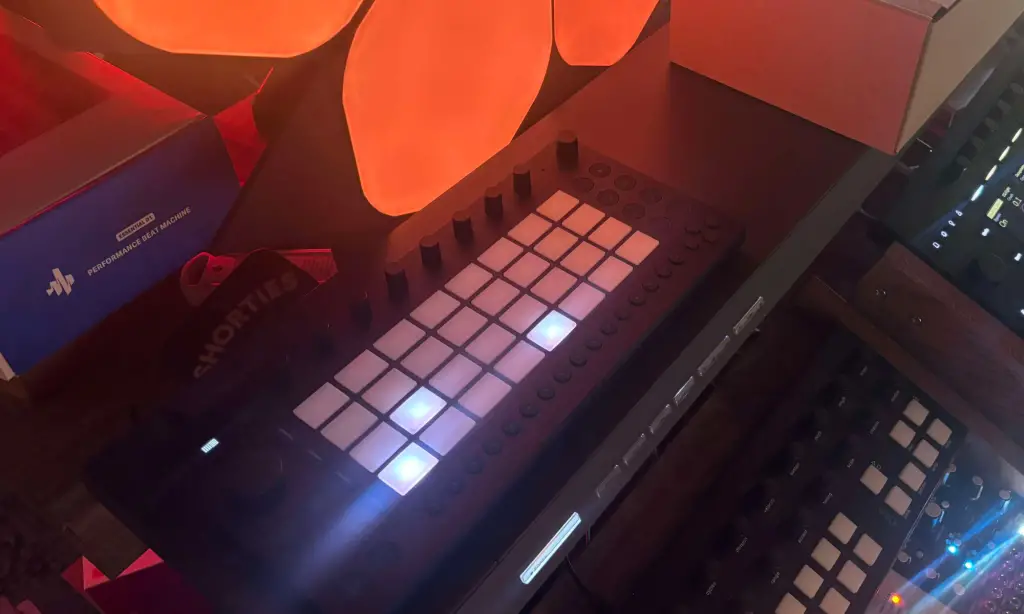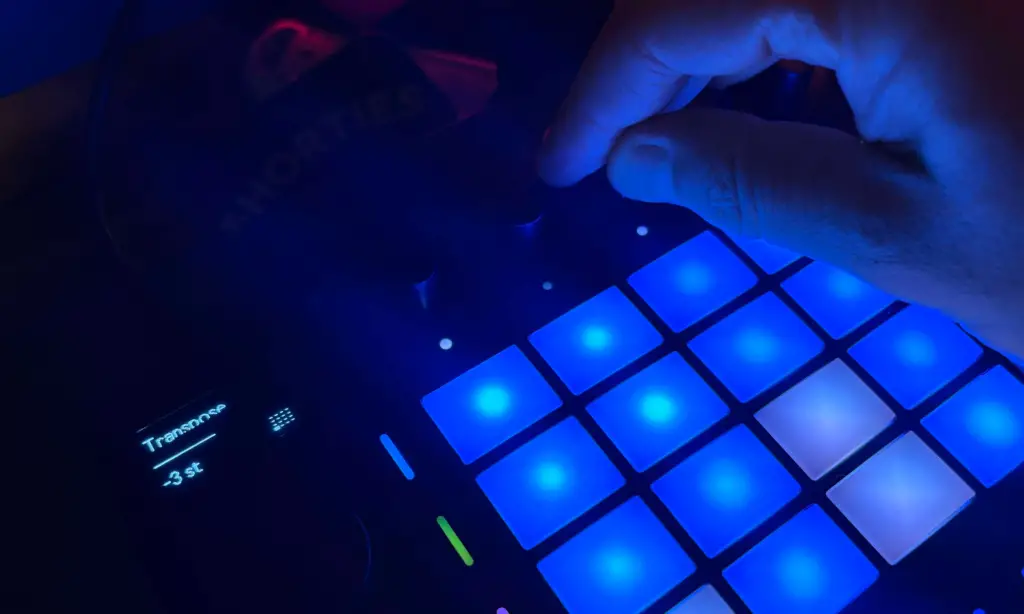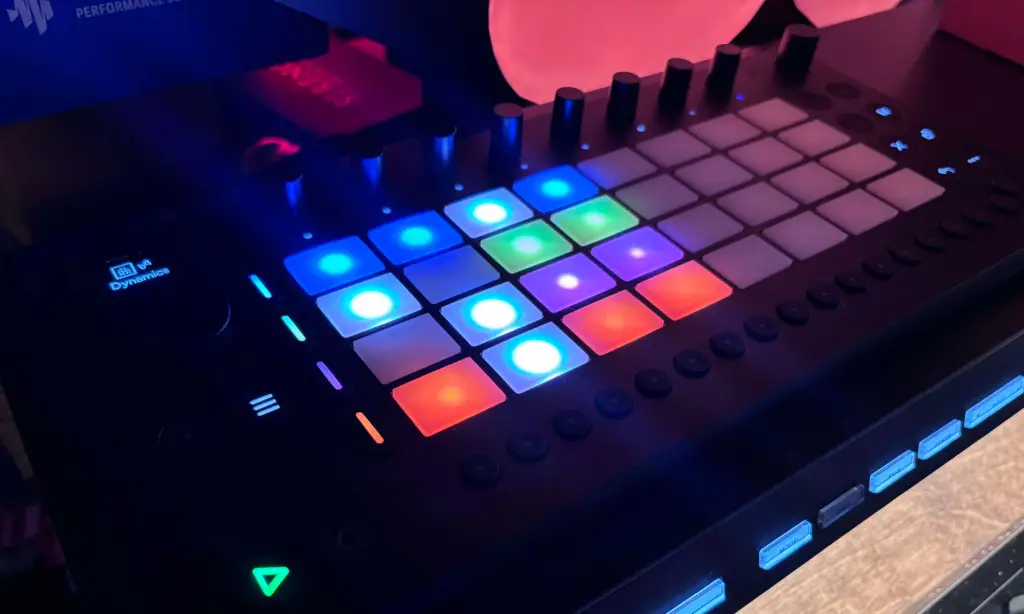Table of Contents
When I first got my hands on the Ableton Move, I wasn’t quite sure what to expect. It’s being marketed as a portable, standalone groove box, and right out of the box, I was struck by how small and straightforward it looked. It’s shockingly light, with a footprint that makes it easy to see how this could be a constant companion—something you can toss in a backpack and pull out anytime inspiration strikes–but that was only me judging a book by its cover.
My first wave of skeptisim was, “can something this compact really deliver enough to make it worth using on the go? Can it make music that’s release ready or is it just a fancy toy with cool branding?” For someone who is constantly juggling different setups and ideas, portability and quick access are key, and the Move promises to be that spontaneous idea generator I’ve been looking for.
I think a lot of us producers get stuck in overthinking and endless tweaking, and I’ve always been a fan of gear that streamlines the creative process instead of complicating it. That’s why I was so intrigued by the Move. While these are just my initial impressions and I’ll dig deeper in a full review later, my first experience with it gave me a good sense of how this device can fit into an on-the-go workflow, whether you’re in a coffee shop, on the road, or just stepping away from the studio for a breath of fresh air.
[embed]https://youtube.com/watch?v=2J-fWq25jhQ&si=w73w73nSKX3PpYto[/embed]A Compact Design with Portability in Mind

It’s small enough to fit in a backpack, yet still sturdy thanks to its metal chassis. The built-in speaker and microphone were a nice surprise for something this compact, giving you options to sample sounds on the fly and while out in the wild. The speaker quality is alright for quick ideas but nothing that’ll blow you away. The microphone, however, opens up some cool possibilities, especially for capturing spontaneous sounds when you’re out and about even if the warping options of said samples leaves a bit to be desired.
With a battery life of around four hours, it’s designed for short sessions. It’s enough to get through a solid idea session, but I wouldn’t mind a bit more juice, especially for longer sessions. That’s something I’ll likely touch on in more detail in the full review once I’ve spent more time with it.
Simple Setup, Streamlined Workflow
The beauty of the Ableton Move lies in how quickly you can start creating and I think that is really its forte. The setup is essentially non-existent—you power it on, load a set, and you’re making music within minutes. This simplicity is one of its biggest strengths, if not its greatest (at least at this stage in the game, where I’ve only clocked a few hours into using it). There’s no getting lost in a maze of menus like you can with only grooveboxes and all-in-on sequencers like the Syntakt; you’re just focused on the music.
What really impressed me in this first test was how the limited interface helped me make creative decisions faster. With fewer distractions, I could focus on building out beats and melodies without second-guessing myself. Sure, it is a bit resource for more in-depth and fleshed-out productions, but it is great for cycling through ideas and rinsing my creative cycle multiple times in a single session.
I found myself quickly layering sounds using the step sequencer, and it was refreshingly easy to manipulate samples and sounds on the go.
Key Features That Stood Out

Even with its size, the Move offers some pretty powerful features. The four tracks may sound limiting, but each track can be anything you want—drum kit, sampler, or synth. That flexibility makes the most out of the track limit and there’s ways you can get clever with sampling and using the devices to have more than just four sounds playing on just four tracks. For example, if you load up drum racks on each track, you’ve got 64 cells to work with, essentially expanding your options far beyond the four.
Another feature that stood out was the ability to transpose drum hits to different pitches, something that I have been a massive advocate for to my production students for years now and is a detail that is often overlooked by even some of the most talented producers that I know. It’s not something you think about until you use it, but it gave me a ton of flexibility for transforming basic drum sounds into melodic elements or just have various drum hits sink into the groove and vibe of the rest of the kit.

The built-in effects like reverb, delay, and saturator are intuitive to tweak and anyone who is used to using them in the desktop version of Live will feel right at home with these. In the full review, I’ll dive deeper into how these effects stack up in a more polished workflow, but for now, they’re more than capable of getting ideas flowing.
Sampling and Sound Options
The Move comes preloaded with over 1,500 sounds and presets, which is impressive. In my brief time with it, I didn’t have a chance to dig into all of them, but what I did use was inspiring. Ableton’s sound design collaborations always deliver, and this felt no different. I’ll definitely be exploring the sound library more as I continue to work with it.
Sampling on the Move is super dope and really intuitive. The built-in mic makes it easy to grab sounds in real time, and it adds an element of spontaneity to your workflow. Whether it’s environmental sounds or vocal snippets, the ability to sample directly into the device felt natural. It’ll be interesting to see how this integrates with more polished sessions once I spend more time with it.
Early Thoughts on Integration with Ableton Live

One of the biggest questions I had was how the Move would work with Ableton Live. Transferring sets to Live is seamless through Wi-Fi, which is a huge plus for anyone who plans to refine their sketches in the DAW later and is a key qualities that makes this thing more than just a toy and actually something serious producers and musicians could find real value in. You can’t transfer projects from Live to the Move, though, which might be a limitation for some. That said, I see the Move more as a sketchpad for ideas that you bring into Live for polishing later or coming up with arp sequences to later run through my hardware gear while back in the studio, not the other way around.
During my initial testing, I also used the Move as a MIDI controller for Live, and it worked smoothly though for obvious reasons it could never rival my Push 3. It doesn’t have the same depth as something like the Push, but it’s responsive and intuitive for quick jams or live performances. I’ll be testing it more thoroughly in my full review, but so far, the integration is looking solid.
First Impressions vs. Full Potential
It’s still early days, but I can already see the potential in the Ableton Move.
While the four-track limit and small screen might seem like drawbacks, the device’s overall design focuses on fast, intuitive creation rather than endless tweaking. There’s definitely room for improvement, especially with features like sample chopping and battery life, but for what it’s designed to do—capture quick ideas on the fly—it’s doing a solid job.
For producers who need a full DAW in a box, this maybe isn’t the answer but I’ll have to get back to you on that in the full review after I’ve had some time to work out some creative ways to use this thing in my daily life and work. But for those of us who want something portable and quick for sketching out ideas, the Move is 100% worth considering. I’ll be spending more time with it and pushing its limits in the coming weeks, so stay tuned for a full review where I’ll dig into more details.
Stay tuned and chat soon…
The post First Impressions Of The Ableton Move: Vibe Checks And Hot Takes On This New Bombshell appeared first on Magnetic Magazine.



